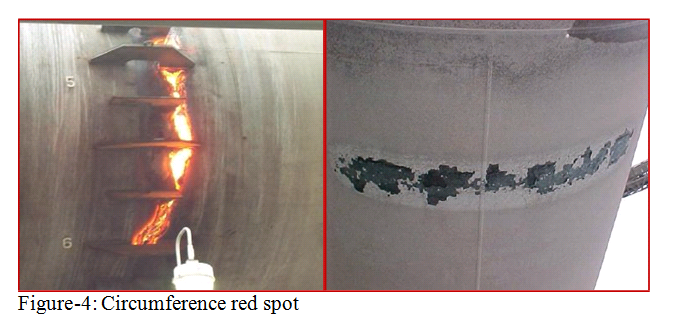Contents
What is the maximum red spot temperature on the shell force kiln to stop?
By: Nael Shabana qatar.cement@yahoo.com
The short answer is 550ºC if the spot is permanent and persistent. This is a short answer, but when we talk about red spot, damaging of shell, long kiln stoppage, and losing millions of Riyals or Dollars; this answer cannot be
acceptable. A number of factors are absolutely necessary to be considered in any red spot before taking the decision of kiln stoppage:
- Proximity of the red spot to the tires or gear: Red spots near tires and bull gears require immediate action. These spots almost invariably force the kiln down. Shutdown procedure must start immediately to avoid damaging the kiln shell.
- Extension of the red spot: The longer the circumferential extension of the red spot, the greater the risk of shell permanent deformation or collapse. If there is any persistent red spot covering more than 10% of the kiln circumference (figure-4); Kiln should stop immediately.
- Kiln alignment conditions: Misaligned kilns induce localized stresses along the kiln length. If the red spot coincides with an area of stress concentration, the shell sometimes elongates or twists beyond recovery.
- Whether the red spot is exposed or under roof: If the kiln shell is directly exposed to the elements and a heavy rainstorm hits the red spot, the shell may develop cracks under sudden quenching. Sometimes the brick results severely crushed in the red spot area.
- The presence of shell cracks in the vicinity of the spot: The presence of cracks in the vicinity of the hot spot calls for an immediate kiln shutdown to avoid shell splitting.
